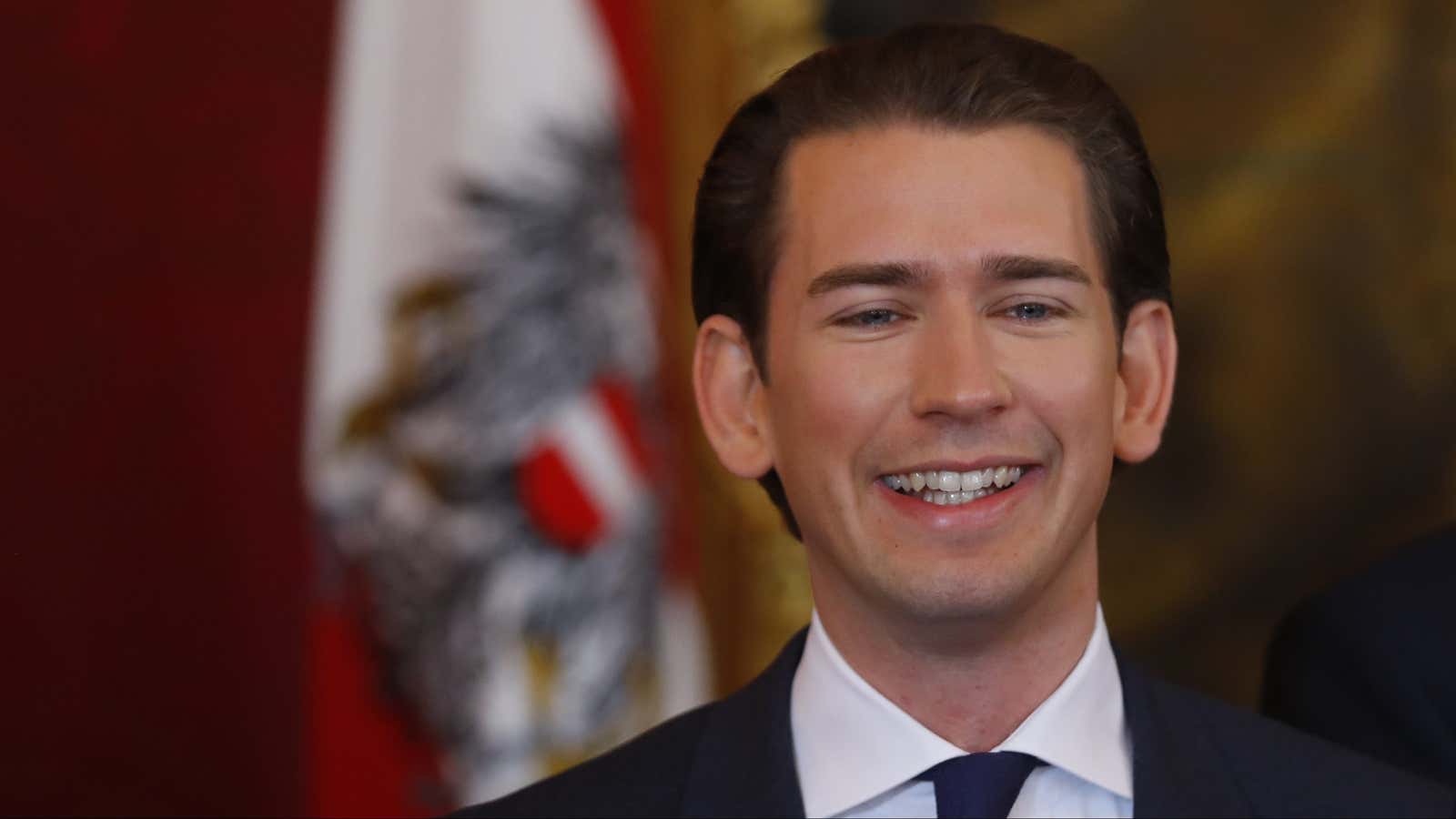Sebastian Kurz is set to become the world’s first leader from the millennial age group of those born in 1981 onwards.
The 31-year-old, who led Austria’s centre right People’s Party to victory in the country’s parliamentary election at the weekend, has already been compared to France’s Emmanuel Macron and Canada’s Justin Trudeau in terms of their youth and popularity. But the likeness begins and ends with their boyish good looks.
While France and Canada’s young leaders ran on a liberal platform that warmly embraces globalization, Kurz won on the promise to pull up the drawbridge. Kurz moved his party for to the right on the election’s key issue—immigration. He vowed to shut down migrant routes to Europe and restrict welfare benefits to refugees.
This may come as a surprise to some. Millennials are often seen as bleeding-heart liberals who fight for social justice. Except when they’re not. Kurz’s electoral victory puts an uncomfortable spotlight on an emerging trend in Europe: the nationalist right can often count millennials among its most avid supporters.
In Europe, millennials have had to contend with the one-two punch of the financial crisis and then the refugee crisis. In the UK, pensioners emerged from the financial crisis with their standard of living relatively unscathed, while young people are still recovering the ground they lost during the recession.
The same is true of France, where youth unemployment remains at a stubborn at 24%—more than double the general level. (In France, the far-right Front National enjoyed support from almost 40% of voters aged 18-24 in the run up to this year’s landmark election.) Youth unemployment is close to 40% in Italy and at 43% in Spain. Greece has gone through several economic tragedies, with young people filling the roles of the main characters and pretty much every supporting ones, too; youth unemployment still stands at 47.4%.
In fact, of the 10 OECD countries with the highest youth-unemployment rate, just one isn’t based in Europe.
At the same time, a million refugees arrived in Europe by sea in 2015 alone. And though certain countries are more likely to be bearing the brunt of the refugee crisis, images of terrified refugees on small dingy boats heading to Western Europe was widely splashed across Europe’s TVs and newspapers. Some young people even dedicated themselves to physically stopping these refugee boats from reaching Europe.
The petri dish of Europe’s youth moving rightwards has been Austria. It was this fear that Kurz and ring-wing populists in Europe were able to tap into.
In last year’s Austrian presidential election, far-right candidate Norbert Hofer managed to win 42% of voters (pdf) aged 29 or under. When that was broken down by gender, Hofer won the majority of male voters aged 29 and under (53%). Kurz electoral strategy had responded to that, so much so that Hofer’s far-right Freedom Party accused Kurz of plagiarism and called him an “imposter.” (Kurz will have to do a deal to take power—and who is the likely coalition partner in parliament? The Freedom Party.)
The far-right reeled in the young in the Dutch general election and French elections, too. In the Netherlands, voters aged over-65 (paywall) were the least likely age group to support far-right politician Geert Wilders.
The Austrian parliamentary election marks an important shift in how young people are voting. The young have long been seen as a bastion of the left, but in the last decade they’ve not only been won over by the far-right—they’re also leading by example.
